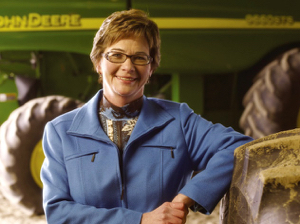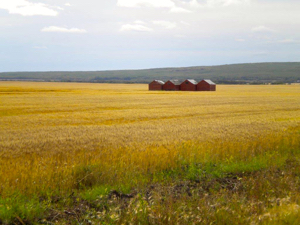Are these financial bottlenecks choking your farm’s performance. Now is the right time to ask, while you can still take corrective action.

In biz-speak, a bottleneck is a point of congestion that causes delays or inefficiencies, leading to higher costs. It’s a perfect metaphor for farm finances at a time of year when the bottle we’d rather be thinking about might have something cold in it, with us sitting on a dock.
Yet summer is a too-good-to-miss opportunity for building a business mindset of continual improvement, says Rob Hannam, president of Guelph-based Synthesis Agri-Food Network. “We talk a lot about what is called lean manufacturing. We look for ways to remove waste or lost time,” Hannam says. “Sometimes little changes can make big gains.”
Financial bottlenecks are damaging to your farm business, even though they can seem a normal part of running a farm and have been the way you’ve always done things, especially on a grain and oilseed farm with only one turnover cycle compared to the multiple cycles of many livestock operations.
Sometimes it takes outside eyes, familiar with your process, to point out these bottlenecks.
1. Get more power from your numbers

Most of your crop input purchases come by mid-summer, so cash flow can be tight… very tight. At that point, it helps to have current information, says Hannam. “Having your financial information up-to-date gives you freedom, it helps you make decisions.”
Last July when Kim Gerencser from Growing Farm Profits in Saskatchewan called a client who was right in the middle of a severe drought, the young farmer was surprisingly calm. As the crop died before his eyes, he focused on catching up on bookwork and crunched the numbers. He had structured his business debt and finances so he knew that with crop insurance payments they’d be fine. Not knowing his current financial position would have been much more stressful.
Often midsummer is the time of the year when invoices have piled up. “Make it a priority to stay on top of your books,” says Gerencser.
It’s also important to know how your debt servicing is being affected in the short term, especially with operating lines in the summer. Operating lines are also the debts most vulnerable to banks clamping down and increasing rates. “Why would the banks call a debt backed up by land or even something saleable like equipment? An operating line is only backed up by a promise,” says Gerencser, a former banker.
To avoid costly overdraft fees and the damage to your credit rating, call and meet with your banker with completed books in hand and simply explain the situation. By being proactive you build relationships and they should be able to help create a way to deal with the cash-flow ebbs of your business.
2. Add up all your living costs

Farm family living costs ballooned with farm income increases. Researchers at the University of Illinois have found the average amount of family living expendables peaked in 2013 to $81,000. The good news is that it has been decreasing slowly since then, but sometimes it’s hard to change living habits.
Too few farmers know their actual cost of living — without farm writeoffs — and yet have a fictional number in mind. For example, when Gerencser asked one retiring couple in their early 60s to estimate theirs, they guessed $40,000 a year. However, a thorough look at the numbers showed they were actually spending $102,000 a year.
Take a moment and add it up, including electricity, fuel, heat, telephone, food, and even house mortgage payments. Then take your living expense budget on a monthly basis and add 25 per cent for unexpected expenses to get a better idea of personal cash flow. “Without knowing this or outright ignoring it, you are creating risk,” says Gerencser.
When personal expenses outstrip a farm’s ability to earn, farmers sometimes slowly sell off high-valued assets. Eating up assets enables them to keep operating, but the farms die piece by piece.
3. Get real on your equipment needs

What better time than after seeding and before harvest to evaluate equipment use and turnover rate. How many hours were put on each piece so far? Is your farm carrying excess equipment? Are you meeting your budget numbers?
Summer is a perfect time to peek into your sheds (and behind them) and ask yourself if you are having a love affair with equipment.
Gerencser was once called in by a creditor to help a farmer who couldn’t understand why he wasn’t getting ahead. When Gerencser drove in the yard, he counted seven tractors… on a 5,100-acre farm.
Gerencser says many farmers know their direct costs (i.e. for seed and fertilizer) and often look there first when trying to trim costs, which means operating and overhead costs do not get the attention they deserve. These cost areas should be examined stringently, and are where the first cuts should usually be made.
On many farms, Gerencser finds, “equipment is just killing them… equipment is not an investment, it’s a cost.”
Gerencser rhymes off a list of eight ways that equipment costs you money: acquiring, owning (including depreciation), financing, operating, fuel, insuring, repairing and maintenance, including labour, and finally selling, such as auctioneer fees or trade losses.
4. Unplug your lease payments

Midsummer is also a time to check your equipment lease agreements and look for ways to decrease lease payments. To compare leasing versus owning, spend some quality time with the Manitoba Agriculture factsheet “Lease or buy: the best equipment option,” available via the ministry website.
Are you driving a fancy leased 350 pickup? Would buying out the lease be cheaper than continuing lease payments? Crunch the numbers before you take a trip to the dealership. That new truck smell is just way too intoxicating.
5. What's in your bins?

Having crop in the bin in midsummer indicates to Gerencser the opposite of a financial bottleneck. It indicates you’re in the enviable position of not having to sell earlier to cover cash-flow requirements, he says. “It’s generally a good sign.”
Rob Hannam agrees, but says to not forget to add in the storage costs, including the physical costs of the storage space, the risk and the effort to babysit the bins. “There are costs to holding it that you need to know,” he says. “Things like having the cash tied up in inventory, the cost of building the bins, the risk of spoilage, the hidden costs of auguring and managing those bins.”
However, having the financial flexibility to control the timing of sales creates opportunities to price into rallies and to add balance to your marketing. Incremental marketing plans sell smaller amounts throughout the year, including the summer. “It’s not going to work every time, but it does work over time,” says David Derwin of PI Financial in Winnipeg.
The summer might also present good opportunities for new-crop pricing, says Derwin, who adds. “Most of the pricing gets done in the bottom third of the market.”
Some farmers have a bottleneck psychology about marketing, says Derwin. It’s that they won’t sell something they don’t have in hand.
“Particularly in the summer, you need a plan to act,” says Derwin. “Maybe it’s having some pricing targets in place in August or booking 20 or 30 or 40 tonnes every week or every month all year.”
6. Tackle your credit card balances

If you are farming or living on plastic, you need to be paying those credit cards off every billing cycle in full, even in the summer. If you let it slip when you have a big balance, the resulting interest rate charges can easily exceed the value of any travel points you could collect.
Credit card debt has no collateral to back it up so rates are extremely high and compounded daily, if left unpaid. Credit card payments are required in less than 30 days before big interest rates are charged and after that it is charged on daily compounding values so consider putting this debt into a cheaper alternative. At the end of each day, the credit card company figures out the interest to charge by multiplying your current balance by the daily rate to come up with the daily interest charge. That charge is added to your balance the very next day.
7. Get last year’s financial statements to the bank!

When Gerencser worked in agricultural lending he often found farmers didn’t get their financial statements to him until well into the growing season, even though their year-end was at the end of December.
Banks usually ask for statements 120 days after a business year-end, but many farmers don’t get their information to their accountant until late February, or early March. Then maybe they don’t meet with the accountant to review until late March or April. By then, spring is starting to call so even if they do get their official statements, they don’t drop them off at the bank right away. Suddenly it’s June, the bank doesn’t have records to prove your capacity from last year, and your debt has just increased from the current year’s crop expenses.
“Suddenly you’re having some very uncomfortable conversations with your banker,” says Gerencser.
Get your financial books to your accountant as soon as possible after year-end, suggests Gerencser. Use online banking to print statements instead of waiting for them to arrive in the mail. Then get your numbers to the accountants, and ensure your credit position with the bank for the upcoming year.











